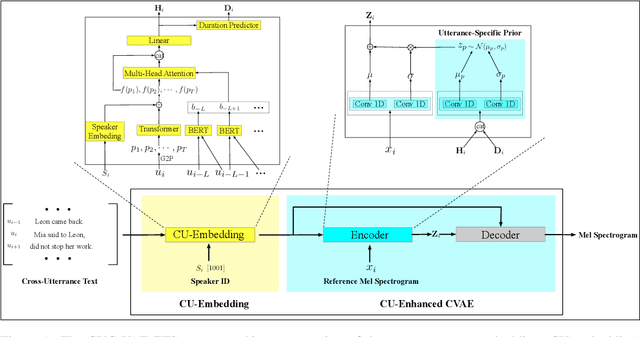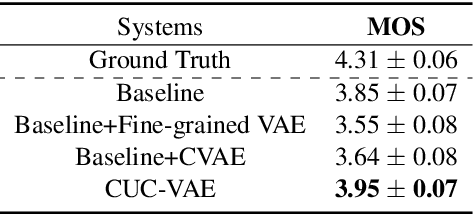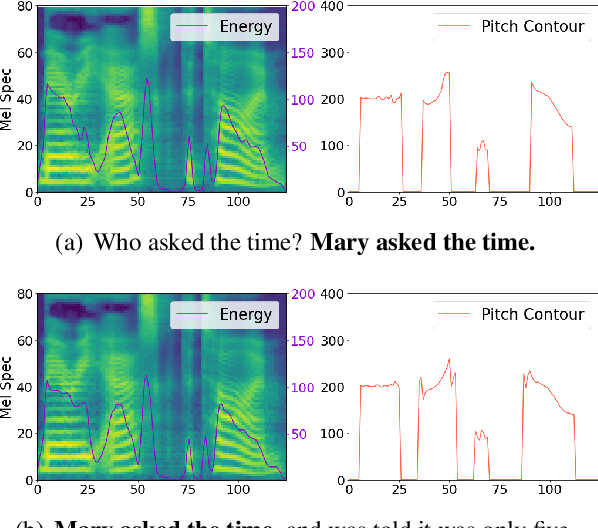Cross-Utterance Conditioned VAE for Non-Autoregressive Text-to-Speech
Paper and Code
May 09, 2022



Modelling prosody variation is critical for synthesizing natural and expressive speech in end-to-end text-to-speech (TTS) systems. In this paper, a cross-utterance conditional VAE (CUC-VAE) is proposed to estimate a posterior probability distribution of the latent prosody features for each phoneme by conditioning on acoustic features, speaker information, and text features obtained from both past and future sentences. At inference time, instead of the standard Gaussian distribution used by VAE, CUC-VAE allows sampling from an utterance-specific prior distribution conditioned on cross-utterance information, which allows the prosody features generated by the TTS system to be related to the context and is more similar to how humans naturally produce prosody. The performance of CUC-VAE is evaluated via a qualitative listening test for naturalness, intelligibility and quantitative measurements, including word error rates and the standard deviation of prosody attributes. Experimental results on LJ-Speech and LibriTTS data show that the proposed CUC-VAE TTS system improves naturalness and prosody diversity with clear margins.
 Add to Chrome
Add to Chrome Add to Firefox
Add to Firefox Add to Edge
Add to Edge